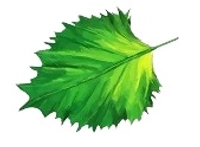Chironji Croton Plant: Elevate Your Indoor Spaces with Vibrant Colors
Add a splash of color and life to your indoor spaces with the Chironji Croton Plant (Codiaeum variegatum). Known for its stunning foliage, this tropical plant is native to Southeast Asia and is a popular choice for enhancing home and office interiors. The Chironji Croton Plant boasts vibrant leaves with a mix of green, yellow, orange, and red hues, creating a lively and eye-catching display.
Indoor Benefits
- Aesthetic Appeal: The Chironji Croton Plant’s colorful and patterned leaves bring a dynamic and tropical vibe to any room, making it a perfect decorative piece for living rooms, offices, and hallways.
- Air Purification: This plant helps improve indoor air quality by absorbing pollutants such as formaldehyde, benzene, and trichloroethylene, promoting a healthier living environment.
- Mood Enhancement: Bright and colorful plants like the Chironji Croton can boost your mood, reduce stress, and create a more pleasant and inviting atmosphere.
- Humidity Regulation: The Chironji Croton Plant helps maintain indoor humidity levels, which is beneficial for respiratory health and skin hydration, especially in dry climates or air-conditioned spaces.
Plant Care Instructions
- Light: Place your Chironji Croton Plant in bright, indirect sunlight. It thrives in well-lit areas but can tolerate some direct sunlight as well.
- Watering: Water the plant when the top inch of soil feels dry. Ensure the pot has good drainage to prevent waterlogging. During the growing season, keep the soil consistently moist but reduce watering in winter.
- Soil: Use a well-draining potting mix rich in organic matter. A mix designed for tropical plants or indoor houseplants works best.
- Humidity: The Chironji Croton Plant prefers high humidity. Mist the leaves regularly or use a humidity tray to maintain moisture levels, especially in dry indoor environments.
- Temperature: This plant prefers temperatures between 60-85°F (15-29°C). Keep it away from cold drafts and sudden temperature changes.
- Fertilizing: Feed the plant with a balanced liquid fertilizer every 4-6 weeks during the growing season. Reduce feeding in fall and winter.
Common Problems and Solutions
- Leaf Drop: This can be due to sudden changes in temperature, low humidity, or improper watering. Ensure consistent care and maintain stable indoor conditions.
- Brown Edges on Leaves: Low humidity or inconsistent watering can cause the edges of leaves to turn brown. Increase humidity and ensure the soil stays evenly moist.
- Pests: Watch for common pests like spider mites, mealybugs, and aphids. Treat infestations with insecticidal soap and regularly clean the leaves with a damp cloth.
- Slow Growth: Insufficient light or lack of nutrients can lead to slow growth. Move the plant to a brighter location and ensure regular feeding during the growing season.
Please Note: Images are for reference purposes only. Actual product may vary in shape or appearance based on climate, age, height, etc. The product is replaceable but not returnable.
